
|

Avoid Harmful Microorganisms
Human parasites are organisms that live inside people to their host’s detriment. Parasites depend on their hosts for their survival. As one might guess, parasites harm their human hosts by consuming their food and nutrients, Often, they destroy the tissues and cells of their hosts by burrowing into or digesting those tissues for food. And they produce toxic waste products that can make their hosts ill.
|
Meet Some Human Parasites
|
|
Liver Fluke
|
Tape Worm
|
Hook Worm
|
|
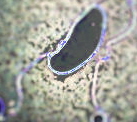
|
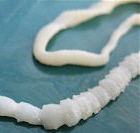
|
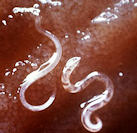
|
|
Candida Albicans
|
Roundworm
|
Pin Worm
|
|

|
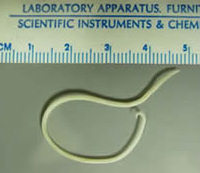
|
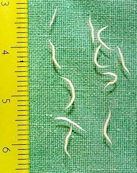
|
|
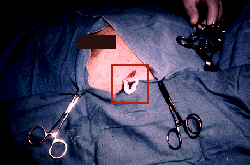 True story: A 46-year-old woman was admitted to the hospital because of swelling of her left breast. A x-ray examination revealed that 2 x 2 cm nodule was noticed in subcutaneous tissue. Breast cancer was suspected and the resection was performed. When her breast skin was cut open, a white string like parasite ran out. True story: A 46-year-old woman was admitted to the hospital because of swelling of her left breast. A x-ray examination revealed that 2 x 2 cm nodule was noticed in subcutaneous tissue. Breast cancer was suspected and the resection was performed. When her breast skin was cut open, a white string like parasite ran out.
There are at least 100 different kinds of human parasites and in some underdeveloped countries, human parasite infections are epidemic, infecting virtually entire populations of people.
In America, parasitic infections are not as widespread, but these infections are on the rise for various reasons. For example, people bring parasites with them when they immigrate to the U.S., and soldiers often return to the U.S. bringing parasites with them from overseas. In addition, our way of life can contribute to the spread of parasites. A large percentage of children contract parasites from their day care centers. Children and adults with dogs and cats at home are at risk for getting parasites. Also, those people that eat at restaurants are at a higher risk because food handlers are a group of people known to be at higher risk to have parasites.
It is estimated that 80% the U.S. population has at least one type of parasite living within their bodies. Once we add Candida yeast as a parasite, then this percentage changes to nearly 100%. Most people don’t recognize bothersome symptoms such as tiredness, itching, difficulty sleeping etc. to be the result of parasites.
Certain parts of the United States have a higher incidence of human parasite infections. This is true for areas that tend to be warmer and more humid. Also, some occupations put people at a higher risk of infection. These include electrical workers, plumbers, animal handlers, soldiers who travel abroad, gardeners, and sanitation workers.
Human parasites are just about everywhere in our environment, so it is easy to come in contact with them. The following are just some of the ways people can acquire parasites.
- insect bites
- animal feces, and especially handling soiled litter pans (cats)
- walking barefoot in areas animals where animals may deposit their feces
- eating raw or undercooked pork, beef or fish
- eating contaminated fruits and vegetables
- eating meals prepared by infected food handlers
- drinking contaminated water
- having contact with infected persons (including sexual contact, kissing, and shaking hands)
- inhaling contaminated dust (parasitic eggs or cysts)
Avoiding parasites is done by specifically avoiding all of the above:
- When outdoors, avoid getting mosquito and chigger bites by covering as much of your skin as possible. Avoid being in swamps, dense woods, field and brush. Use insect repellent.
- Don’t have house pets, but if you do, have them de-wormed very frequently.
- Don’t walk barefoot in areas where animals roam
- Cook meat and fish thoroughly
- Wash raw fruits and vegetables thoroughly. You are safer with sources from countries with the highest hygienic standards.
- Be very careful to eat uncontaminated sushi (look at http://www.pubmedcentral.nih.gov/articlerender.fcgi?artid=358121 for more information)
- Use a mask when cleaning areas that may have had rodents living there. Afterwards shower well and wash all of your clothes including your shoes.
The Parasite Cleanse.
Since avoiding contact with parasites is probably impossible, everyone should have the goal of not allowing parasites to stay for long in their body.
We recommend doing an Eight Day Cleanse twice per year (six months apart) to accomplish this, or alternatively, to do the Eight Day Cleanse once per year and consume a bottle of the Parasite Killing Formula six months later.
|

|

Facts that May Surprise... Horrify Pet Lovers
Here are a few unsettling truths about parasites:
Pet Fleas Carry Tapeworms
One female flea can lay 25 to 50 eggs on a pet each day. Fleas, which carry tapeworm and attack an animal’s skin, can jump more than eight inches high, making them the insect equivalent of Superman scaling the Empire State Building.
A solitary flea can bite a cat or dog more than 400 times in one day. Fleas love the humid climates of the Gulf Coast states and Southern California, and thrive in the warm spring and summer weather in other states.
Pet Fur Can Bring Home Ticks With Lyme Disease and Rocky Mountain Spotted Fever
Ticks burrow into the fur of their hosts and can be so small they are nearly invisible.
Some species of ticks lay about 100 eggs at a time. Others lay 3,000 to 6,000 per batch.
More than 16,000 Americans are infected with Lyme disease carried by deer ticks each year, according to The Centers for Disease Control and Prevention. Often those ticks arrive in the home aboard pets.
Ticks can carry Rocky Mountain spotted fever, which affects 300 to 400 Americans each year.
Ticks love moist and shaded environments. Common in thickly wooded regions and areas filled with brush and grass, ticks are found in the greatest numbers during the late spring through summer months in most parts of the United States.
Dogs and cats are hosts to several different intestinal parasites or worms that can be transmitted to people, but the most common of these are roundworms, hookworms, whipworms and tapeworms. These parasites can be passed from their mother to her offspring through milk or close proximity.
Dogs and cats pick up parasites, especially hookworms from soil that is contaminated or from sharing pet toys. They usually get tapeworms from fleas. And humans can get these parasites from their pets.
De-wormers for pets do not kill all types of parasites, so you may need to use several types to ensure that all types of parasites are killed.
|